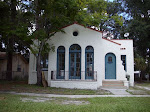Tonight when I got home from work I was greeted by a bunch of neighborkids who were on an accountability mission. They remembered that I’d promised to share a chocolate Easter bunny with them, and they were ready for me to follow through on that commitment.
After everybody came inside and we’d divvied up / gobbled up the chocolate rabbit and washed it down with ice water, I asked the kids, “Will you guys help me out with my homework tonight?” I wanted to see if we, as fellow neighbors, could try out an exercise I recently learned that is associated with a community change framework called “
Results-Based Accountability.”
The kids said okay, so I asked them to help me answer the following questions:
If all the kids in our neighborhood were
… happy…
…healthy…
…learning…
…loved…
…contributing…
…loving…
how could we tell?
Here’s what the kids (ages 6, 7, 8, 9, 10 & 10) had to say:
1. If all the kids in our neighborhood were HAPPY we would notice:
· Kids jumping on the bed and in trees
· Every kid would have a nice monkey …or pets…or puppies
· Kids drawing pictures with chalk
· Kids having fun with Miss Allison
· There would never be storms
· The whole world would have superpowers
· No kicking nobody
· No fighting
· No punching
2. If all the kids in our neighborhood were HEALTHY we would notice:
· More fruit
· Growing up bigger and bigger
· Lose weight / don’t be fat
· Don’t be skinny
· Have more superpowers
· Gus (Miss Allison’s puppy) would be bigger
3. If all the kids in our neighborhood were LEARNING we would notice:
· Thinking in your brain
· Go to school every day
· Learn about everything
· Don’t be bad – be good
· Listen to the teacher
· Follow the rules
· They’re going to be outside all the time
· Do all your homework
· Don’t stand around on the sidewalk
4. If all the kids in our neighborhood were LOVED we would notice:
· People saying, “I love you” more
· They would love dogs
· They would love school
· They’d go to somebody’s house every day and they’d let them in and they’d stay for like an hour
· Ask them and they would say, “I am loved”
· I love our neighbor Joanna
· They would say “I love you” really much
5. If all the kids in our neighborhood were CONTRIBUTING (doing things for our neighborhood and for the world, like grown-ups do), we would notice:
· Kids helping their moms
· Helping their dads
· Helping their parents
· Doing what your parents say
· Drawing pictures on the road
· Washing cars with grown-ups
· They would have a shirt on about what they were doing
6. If all the kids in our neighborhood were LOVING we would notice:
· Kids loving their parents
· Kids loving their grandmothers and grandfathers
· Kids loving their cousins
· Kids loving their pets
[What would that look like? How could we tell?]
· They would be happy
· Well, say they were crying – someone outside, they came and talked to them and then they really weren’t crying because they were loved.
I have to say, I am pretty impressed by how capable these neighborkids are when it comes to identifying what community planners and social service providers refer to as “population outcomes.” Sure, there were a couple of “strategies” in the mix (like “every kid having a nice monkey” to be happy and “more fruit” to be healthy), but overall these were legitimate examples of community-wide well-being!
The neighborkids’ brainstorm has got me thinking again: What as-of-yet-undiscovered potential might be revealed if we all were to orient in earnest around the wisdom of children?


























